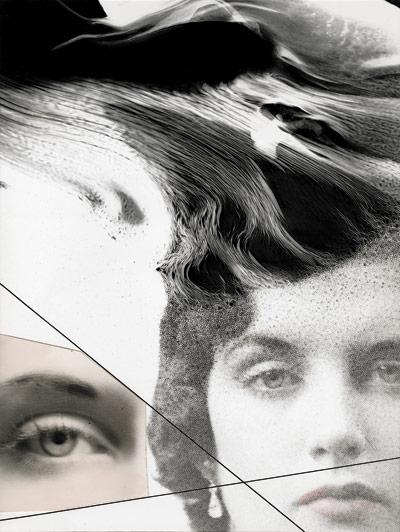Herbert Matter’s Photographs

Photographs typically need little introduction: what you see is what you see. With Herbert Matter, it is a different story.
While a perceptive and artistic documentary photographer, Matter, a long-time resident of East Hampton and habitue of its art scene until his death in 1984, was much more. He began his artistic training at the Ecole des Beaux Arts in Geneva and continued his studies in Paris with Fernand Leger. In Paris he took up graphic design, a field that, with his use of photography, he helped define and revolutionize in the mid-20th century. And while he may not have invented photomontage, he certainly owned it as a means of expression.
Then he took the photographic medium even further, understanding its possibilities as a tool of abstraction, using light to draw on paper. The old-school silver gelatin emulsion he used resulted in prints as dense as pudding, with depth and richness only possible with great preservation and the quality of materials used almost a century ago.
In a show at the Gitterman Gallery in Manhattan, Matter’s photographs show the path of his artistic vision, using his early and later mashups and unique abstract designs to tell the story of his artistic development. He transmogrified his contemporaries’ obliteration of the painted image as an expression of postwar ennui and apprehension into the photographic medium. He did so as an aim in itself, not simply to document, and for the benefit of graphic design.
Matter arrived in New York City in 1935 and stayed, becoming a freelance photographer under Alexey Brodovitch at Harper’s Bazaar. Brodovitch, one of the design visionaries of his time, had been a fan of Matter’s prior to his arrival in the United States, and had collected the travel posters he had designed in Switzerland. Matter’s work was also featured in such magazines as Fortune, which was also known for its embrace of contemporary art and design in its covers of the time.
He became a friend of Alexander Calder’s after being assigned to photograph his work for Pierre Matisse Gallery, which would eventually show Matter’s work as well. The two artists became lifelong friends, and Matter’s distinctive images of Calder’s works became intertwined with the way many people continue to experience and remember his work.
A 1939 image of a Calder stabile is included in the Gitterman show. It appears to be straightforward, but the image, of the black stabile on a light stone tile background, exposed to make the contrast as stark as possible, suggests photomontage, as if the sculpture were applied to a background from another scene. It is bold and disorienting and still fresh decades later.
The dates are fluid in this show, mostly because the artist did not date his work. The dates that have been worked out mark the period of time before he moved to Los Angeles in 1943 to work with Charles and Ray Eames, and then the years after 1946, when he returned. In the years before, he has already mastered the abstract possibilities of photography. By 1948, and in some instances even earlier, when many breakthroughs were being made in Abstract Expressionism, he had figured out how to bridge the gap between the type of painting being done then and the contributions possible through the photograph.
The gesture, the action, the mark, are all there, just made through manipulated mechanical means. Are the resulting images more rigid and geometric in some ways than the pure distillation of action and performance in paintings by artists such as his friends Jackson Pollock, Franz Kline, and Willem de Kooning? Yes, but not in a way that makes them any less liberating and revolutionary.
The exhibition provides a well-rounded variety of images, enough to provide both context and highlights of Matter’s career. There are examples of straightforward techniques used to document the abstract in daily surroundings; photomontage, and then his own manipulations of the medium to create unique images. It is a strong showing overall.
As a matter of taste, one work that served as a cover of Arts and Architecture magazine in 1946 seems weaker than others in the show. On a large white background, a photographic image of a mushroom cloud takes the shape of a human head in profile. The face and eyes of the head point in the direction of a much smaller Planet Earth. In the days before widespread satellite imagery this may have seemed radical, but its simplistic sincerity seems unsophisticated in its message.
Still, it offers a literal distillation of the preoccupations of the time, particularly in the contemporary artistic community, which responded to the nuclear age by nuking the subject matter in its work. It was an understandable decision to include it in the show, but it does drain some of the power of the other works around it.
The show is up through Saturday and will be followed by an exhibition of work by Adam Bartos, opening April 3.
